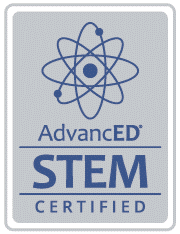When I notice the many changes that have occurred during the transition to the new classroom, I am most impressed with the way in which the students seem to be more engaged in daily activities. This has been achieved with new furniture/technology and with the introduction of the personal whiteboards to the students. The whiteboards serve many functions in the new classroom, including privacy and visibility.
Privacy is necessary for assessment and giving the students an “ownership” mentality over their work. One interesting observation is that students will situate themselves in their own space on assessment days (standing the whiteboards in their respective slots on the new desks) without even being told to do so. It establishes and reinforces the concepts of honesty, integrity and discipline. These are values that most young men at our school are eager to demonstrate. A student who is proud to show off his abilities will choose to work diligently by himself, essentially taking ownership of his individual responsibilities as a student.
Being one of the more “simple” changes to the classroom, it has been a great success having the students break away from the confines of the small screen of the iPad to actively use the whiteboards. They enjoy writing freely in color and proudly display their answers as quickly as they can. It has worked for a variety of activities, from basic mechanical conjugations in my lower level French classes to complex textual analysis in my AP course. It can be used in an individual context or in a group activity. Different whiteboards can also be used to different purposes (i.e. one can serve to define a concept while another enumerates characteristics). The whiteboard can be used for contests, games, warm-up activities, collaboration and informal assessment.
...there is no longer a “back of the classroom,” and each student is as visible and approachable as the next.
The reason that this “simple” technology has caught my eye as having a major influence on student learning is due to one student in particular. Struggling to make it through French 1 last year with a D-, this student was satisfied with doing the minimum to get by in our former classroom. He would frequently disengage, sit in the back of the class and try his best not to be noticed. With such a student it can be hard to get him back “up to speed” and turn him around after consistently poor performance. However, with the new classroom, he has been very involved and engaged. In my observation, he has most identified and responded to the use of the whiteboard for showing that he has taken a new initiative to learning language this year. As a quiet boy, he has shown me through his nonverbal feedback that he is doing well with the new concepts and grammar that we have learned so far this year. Indeed, he has proven to be one of the top performers in that class so far this year. I have tried my best to recognize and praise this progress individually and to the class as a whole. I can use his whiteboard to show the class the correct response or to illustrate mastery of an objective. This is easily achieved, because there is no longer a “back of the classroom,” and each student is as visible and approachable as the next. This can only further reinforce a sense of pride and accomplishment as a positive experience in the classroom, and by extension, in academia.




Comments